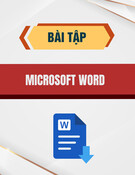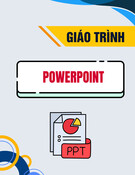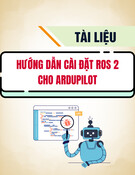
GpuCV: An OpenSource GPU-Accelerated Framework for
Image Processing and Computer Vision
Yannick Allusse
EPH, Telecom & Management
SudParis
9 Rue Charles Fourier
91011 Évry Cedex,FRANCE
yannick.allusse@it-
sudparis.eu
Patrick Horain
EPH, Telecom & Management
SudParis
9 Rue Charles Fourier
91011 Évry Cedex,FRANCE
patrick.horain@it-
sudparis.eu
Ankit Agarwal
EPH, Telecom & Management
SudParis
9 Rue Charles Fourier
91011 Évry Cedex,FRANCE
ankit.agarwal@it-
sudparis.eu
Cindula Saipriyadarshan
EPH, Telecom & Management
SudParis
9 Rue Charles Fourier
91011 Évry Cedex,FRANCE
cindula.saipriyadarshan@it-
sudparis.eu
ABSTRACT
This paper presents GpuCV, an open source multi-platform
library for easily developing GPU-accelerated image process-
ing and Computer Vision operators and applications. It is
meant for computer vision scientist not familiar with GPU
technologies. It is designed to be compatible with Intel’s
OpenCV library by offering GPU-accelerated operators that
can be integrated into native OpenCV applications. The
GpuCV framework transparently manages hardware capa-
bilities, data synchronization, activation of low level GLSL
and CUDA programs, on-the-fly benchmarking and switch-
ing to the most efficient implementation and finally offers
a set of image processing operators with GPU acceleration
available.
Categories and Subject Descriptors
I.4.0 [Image processing and computer vision]: Gen-
eral—Image processing software
General Terms
Algorithms, Performance
Keywords
GPGPU, GLSL, NVIDIA CUDA, computer vision, image
processing
1. INTRODUCTION
Permission to make digital or hard copies of all or part of this work for
personal or classroom use is granted without fee provided that copies are
not made or distributed for profit or commercial advantage and that copies
bear this notice and the full citation on the first page. To copy otherwise, to
republish, to post on servers or to redistribute to lists, requires prior specific
permission and/or a fee.
MM’08, October 26–31, 2008, Vancouver, British Columbia, Canada.
Copyright 2008 ACM 978-1-60558-303-7/08/10 ...$5.00.
Nowadays, graphical processing units (GPUs) are power-
ful parallel processors mostly dedicated to image synthesis
and they have made their way to consumers PCs through
video games and multimedia. Recent graphics card genera-
tion offers highly parallel architectures (hundreds of process-
ing units) and high memory bandwidth to reach peak perfor-
mances close to the TeraFLOPS. In counter part, they suf-
fer from complex integration and data manipulation proce-
dures based on dedicated APIs compared to the well known
CPUs, that barely reach 50 GigaFLOPS. While they have
become the most powerful part of middle-end computers,
they opened new gates to cheap General Purpose processing
on GPU (GPGPU) that numerous public application could
use.
In this paper, we present benefits and issues of using
GPGPU for image processing. Then we introduce our open
source framework for image processing and computer vision,
which is an extension of Intelˇ
Ss OpenCV[4] library, the pop-
ular library for interactive computer vision applications.
The GpuCV framework is meant to transparently manage
hardware capabilities with different card generations, data
synchronization between central and graphics memory and
activation of low level GLSL and CUDA programs. It per-
forms on-the-fly benchmarking and switching to the most
efficient implementation depending on operator parameters.
Finally, it offers a set of image processing operators with
GPU acceleration available and integration solutions to port
OpenCV existing applications to GPU.
2. GPU CAVEATS
General purpose computing with GPUs brings several chal-
lenges and technological issues.
2.1 Platform dependency
GPU technologies are evolving rapidly and rely on ded-
icated interfaces meant for parallel image rendering. Each
year, a new generation of graphic chipset is released with

new features, extensions and backward compatibility issues.
Most important features are the shading model version (used
by vertex, geometry, fragment shaders), rendering target
support such as FrameBufferObject (FBO) or PixelBuffer-
Object (PBO), and some particular API support such as
NVIDIA CUDA[5] or ATI CTM[2].
2.2 Data transfers
When processing data on a GPU, transfers between the
central memory (CPU RAM) and the video memory (GPU
RAM) may be a bottleneck. A GPU accelerated algorithm
will better run several operators consecutively on GPU to
reduce the transfer cost. An operator that is slower on GPU
may still be preferred to keep the data on GPU and avoid
data transfers.
2.3 Sequential to parallel processing
Some sequential image processing algorithms that are well
suited for the CPU architecture cannot be easily and effi-
ciently transposed on the GPU parallel architecture, thus
requiring some attention. While algorithms that process
each pixel independently can be fairly easy ported to GPU,
global image computation (e.g. histogram, labeling, dis-
tance transform, Deriche filter, sum array table) requires
ad hoc implementation. Recent technology such as CUDA
helps but requires tricky tuning for efficient acceleration[3].
2.4 Varying relative GPU/CPU performances
Activating GPU code requires an operator dependent ac-
tivation delay, so small images do not benefits from using
GPU. First, calling a program on the GPU has an over-
head cost (about 100 micro-sec for CUDA, 180 micro-sec for
OpenGL and GLSL) which is often more than the CPU op-
erator time. Secondly, the GPU need a minimum amount
of data to process to hide the memory latency by increas-
ing the number of consecutive threads that are executed in
parallel. Performance of operators may vary depending on
data size and format.
2.5 API restrictions
The output of fragment shaders is write only which presents
reads by that shader and forces recursive algorithm to be
implemented with multiple calls of that shader. NVIDIA
CUDA solves theses limitations at the cost of a more com-
plex data format management. Indeed, CUDA has direct
access to the graphic card. Pixel format conversions previ-
ously done by the graphic drivers are now handled by the
application and must be optimized manually[3].
3. GPUCV APPROACH
We have developed GpuCV as an open source library and
framework for Image Processing and Computer Vision ac-
celerated by GPU. It is meant to support computer vision
scientist and developer not familiar with GPU technology in
taking advantage of GPU acceleration by:
•Offering a set of replacement GPU optimized parallel
routines for Intel’s OpenCV library routines.
•Offering a framework that transparently compare be-
tween CPU and GPU implementations and switches
the most efficient.
•Offering a framework with mechanisms to work around
some of the GPU caveats, namely platform depen-
dency and data transfers.
We describe here the main GpuCV framework features
such as processing methods, data manipulation and best
implementation auto-switch mechanisms and finally integra-
tion facilities into existing applications.
3.1 Processing technologies
GpuCV supports two GPU computing Application Pro-
gramming Interface(API), namely OpenGL + GLSL and
NVIDIA CUDA, to offer both advantages and bypass their
limitations. While OpenGL+GLSL is a widely used API,
it insures high compatibility with most hardware and OS.
GpuCV-GLSL plug-in uses general OpenGL rendering fea-
tures such as rendering-to-textures, depth buffer, MIPMAP-
PING as well as vertex/geometry/fragment shaders to per-
forms custom operations. It allows 2D/3D contents comput-
ing and makes abstraction of the data types and formats.
GpuCV-CUDA plug-in is base on CUDA general computing
library which is compatible only with NVIDIA graphics card
since generation 8. It uses low level C style GPU program-
ming and offers some solutions for ad hoc recursive opera-
tors. GpuCV includes features to make abstraction of the
data types and formats. While CUDA support interactions
with OpenGL, this two plug-ins can be used in the same
algorithm to take advantages of both technologies. Most
operators supplied by GpuCV are developed with both API
for compatibility reasons.
3.2 Data manipulation
Processing data either with CPU or GPU requires to han-
dle data in central memory and/or in graphic memory. Some-
times several data formats have to made available in one
location such as IplImage or CvMat for OpenCV, texture
or buffer for OpenGL and array or buffer for CUDA. Han-
dling data potentially stored in multiple locations requires
synchronizing output images and enforcing read only access
to input images. In order to save developers the burden of
managing data manipulation and transfer, GpuCV supplies
unified data container to describe the data format of an im-
age and to allow transparent data handling. In case data
location and format do not match the selected implemen-
tation, the data is transparently copied into the required
location and formats.
In case data is available from several locations, a ’smart
transfer’ option can estimate all possible transfer time cost
and select fastest one. Finally, GpuCV differentiates be-
tween input and output images so writing to an output im-
age discards all other existing instances for data consistency
sake.
3.3 Automatic switching a GpuCV operator
A GpuCV based application should run on CUDA enabled
platform, or an older GLSL only platform or even a low end
CPU only platform. So a GpuCV operator may include up
to three implementations:
•Native OpenCV.
•Standard OpenGL + GLSL.
•NVIDIA–CUDA.

First, each implementation performs differently depending
on input parameters such as image size and format, optional
filter parameters as well as used algorithm and workstation
hardware (CPU, RAM, Graphics card, graphic bus...). So
processing time depends on too many parameters to be eas-
ily predicted and no implementation can be statically chosen
as the fastest for any operator. Second, they require data
in associated memory (central or graphic memory) and data
transfer might be done according to the previously used im-
plementation. Because applications can not predict if next
operator is executed on GPU or CPU, the synchronization
process is often charged to the developer and add more com-
plexity to already complex source code. We have developed
a dynamic switch mechanism that works heuristically based
on local implementations’ benchmarks and estimated trans-
fer times. We have implemented this mechanism internally
to each GpuCV operator to transparently switch between
the CPU and GPU implementations.
3.3.1 Switch implementation
The switch mechanism performs in the following three
modes:
- Benchmarking mode - Collects, on the fly, processing
times for all implementations.
- Switch mode - Chooses best implementation to call
depending on previously recorded benchmarks.
- Forced mode - User can force the switch to call any of
the implementations.
Compatibility of the workstation hardware with an imple-
mentation is respected by the switch in all modes. Also to
ensure full compatibility with the native CPU operator we
synchronize input data to CPU memory when required.
Benchmarking mode runs until we get significant infor-
mation about all implementations according to their input
parameters such as image properties and optional operator
parameters. We use SugoiTracer[1] to collect the statistics
(such as average processing time, standard deviation, total
time...). The mechanism leaves benchmarking mode to go to
switch mode when the standard deviation time shows stable
and coherent values.
In the switch mode, it calculates the calling cost for each
implementation using the processing time and eventual data
transfer time depending on the data memory location. Then
it calls the fastest implementation.
Finally the switch can be forced by the user to call a
desired implementation for any operator. It can be used
to select an implementation for show case or benchmarks as
well as to avoid the switching cost for small images.
3.3.2 Converting all OpenCV operators to GpuCV
auto-switch operators:
GpuCV supplies several interfaces to directly access all
the GPU implementations from GpuCV-GLSL and GpuCV-
CUDA as well as a switching interface which contains all the
switch operators. The switching interface is self generated
using OpenCV functions’ declarations and uses dynamic li-
brary loading mechanism to find all GpuCV available im-
plementations. Knowing the auto-switch has an observed
mechanism time of about 350µs, which is negligible for large
images but become too costly for really smaller ones. As all
the GpuCV interfaces respect OpenCV original functions
declarations, developers can either directly call implementa-
tions at the cost of some manual optimization and synchro-
nization or simply call the auto-switch operators to ensure
that the fastest implementations is called.
3.4 Integration
GpuCV has been designed to be fully compliant with ex-
isting OpenCV applications, and thus on multiple OS such
as MS Windows XP and LINUX.
3.4.1 Porting an OpenCV application to GpuCV
As previously described, the smart data transfer mecha-
nism transparently handles multiple data locations and for-
mats and the automatic switch mechanism select the most
efficient implementation available. This makes it possible
to smoothly and easily integrate GPU acceleration routines
for the GpuCV library with CPU based routines from In-
tel’s OpenCV popular library[4]. Actually, the highest level
interface to GpuCV is a set of routines that are meant as
replacement for OpenCV native routines. Porting an exist-
ing OpenCV application to GPU now consists of changing
a few header files, linking libraries and adding manual syn-
chronization when image data are accessed without using
OpenCV functions.
3.4.2 Demos and tutorials
Several demos are available to test and benchmark GpuCV
on your computer, they can be used to learn how to inte-
grate GpuCV into you application or to estimate the gain
of using GPU on your system. Advanced tutorials are also
available to create custom operators using GLSL or CUDA.
4. RESULTS
In this section, we present some results achieved for large
image files, comparing OpenCV, GpuCV-GLSL and GpuCV-
CUDA. The testing workstation is an Intel Core2 Duo 2.13
Ghz CPU with 2GB of RAM and NVIDIA GeForce GTX280
GPU with 1GB of RAM.
4.1 Benchmarking tools
GpuCV integrates some embedded benchmarking tools[1]
that are used to record data transfer times and processing
time for GPU as well as CPU implementations. It can be
used to benchmark a native OpenCV application and return
statistics about all the OpenCV calls depending on input
parameters such as data size, format and operators options
such as filter size of filter mode.
4.2 Point to point operations
GpuCV includes numerous point to point operations for
arithmetic, logic, comparison and math functions. They are
implementated using simple GLSL shaders and CUDA ker-
nels. Table 1 shows some results.
4.3 Advanced operations
GpuCV supplies some advanced operators such as mor-
phology and edges detection, matrix multiplication, DFT
and more. See Table 2.
5. FUTURE WORKS
GpuCV future works will be oriented into:
•Adding more GPU accelerated operators,

Table 1: Benchmarks for some point-to-point oper-
ators supplied by GpuCV, image size is 2048*2048
and format is RGB 8 bits
Operator OpenCV GpuCV-GLSL GpuCV-CUDA
Add 27ms 1.28ms (x21) 1.78ms (x15.2)
Mul 73.6ms 1.2ms (x61.3) 990µs (x74.3)
Minimum 12.4ms 1.2µs (x10.3) 1.7ms (x7.3)
Avg 4.5ms 266µs (x16.9) N/A
Power 27.5ms 1.5ms (x18.3) 4.8ms (x5.7)
Split 14.3ms 2.4ms (x6) 1.1ms (x13)
Threshold 4.3ms 990µs (x4.38) N/A
BGR to Gray 16.8ms 980µs (x17.1) N/A
Table 2: Benchmarks for some advanced operators
supplied by GpuCV, image size is 2048*2048 and
format is RGB 8 bits
Operator OpenCV GpuCV-GLSL GpuCV-CUDA
Erode 85.1ms 2.9ms (x29.3) 1.2ms (x70.9)
Sobel 49ms 14ms (x3.5) 1.1ms (x44.5)
Deriche (float-1) 1997ms N/A 19.35ms (x103)
Matrix Mul.(float-1) 11600ms N/A 60ms (x193)
DFT (float-1) 447ms N/A 10ms (x44.7)
•Improving integrations into OpenCV applications and
image processing libraries,
•Improving hardware and multi-GPU support,
•Adding a debugging user interface for a better under-
standing of internal mechanisms.
•Supporting new OS (Mac OS) and platforms (64 bits).
6. CONCLUSION
In this paper, we presented benefits and issues of using
GPGPU for image processing. We described our open source
framework for image processing and computer vision, which
is an extension of Intelˇ
Ss Open CV library. It is meant to
help scientist and developer porting their existing applica-
tions or new algorithm GPU without falling into low level
GPU complexity. It offers many features to transparently
manage hardware capabilities, data synchronization, GLSL
and CUDA support, on-the-fly benchmarking and switch-
ing to the most efficient implementation and finally offers
a set of image processing operators with GPU acceleration
available.
As an open source project, we encourage the community
to use and contribute to the library. GpuCV sources and in-
formations are available at https://picoforge.int-evry.fr/cgi-
bin/twiki/view/Gpucv/Web/WebHome.
7. REFERENCES
[1] Y. Allusse. Sugoitracer: tools for embedded application
benchmarking. http://sugoitools.sourceforge.net/, 2006.
[2] ATI. Ctm (close to metal).
http://ati.amd.com/companyinfo/researcher/documents/ATI CTM Guide.pdf,
2007.
[3] M. Harris. Sc07 - high performance computing with
cuda - optimizing cuda.
http://www.gpgpu.org/sc2007/SC07 CUDA 5 Optimization Harris.pdf,
2007.
[4] Intel. Opencv: Open source computer vision library.
http://opencvlibrary.sourceforge.net/.
[5] NVIDIA. Cuda (compute unified device architecture).
http://www.nvidia.com/object/cuda home.html, 2006.



![Bài giảng Phần mềm mã nguồn mở [mới nhất]](https://cdn.tailieu.vn/images/document/thumbnail/2025/20250526/vihizuzen/135x160/6381748258082.jpg)
![Tài liệu giảng dạy Hệ điều hành [mới nhất]](https://cdn.tailieu.vn/images/document/thumbnail/2025/20250516/phongtrongkim0906/135x160/866_tai-lieu-giang-day-he-dieu-hanh.jpg)


![Bài giảng Hệ điều hành: Trường Đại học Công nghệ Thông tin (UIT) [Mới nhất]](https://cdn.tailieu.vn/images/document/thumbnail/2025/20250515/hoatrongguong03/135x160/6631747304598.jpg)


![Bài giảng Hệ điều hành Lê Thị Nguyên An: Tổng hợp kiến thức [mới nhất]](https://cdn.tailieu.vn/images/document/thumbnail/2025/20250506/vinarutobi/135x160/8021746530027.jpg)

![Đề thi Excel: Tổng hợp [Năm] mới nhất, có đáp án, chuẩn nhất](https://cdn.tailieu.vn/images/document/thumbnail/2025/20251103/21139086@st.hcmuaf.edu.vn/135x160/61461762222060.jpg)


![Bài tập Tin học đại cương [kèm lời giải/ đáp án/ mới nhất]](https://cdn.tailieu.vn/images/document/thumbnail/2025/20251018/pobbniichan@gmail.com/135x160/16651760753844.jpg)
![Bài giảng Nhập môn Tin học và kỹ năng số [Mới nhất]](https://cdn.tailieu.vn/images/document/thumbnail/2025/20251003/thuhangvictory/135x160/33061759734261.jpg)
![Tài liệu ôn tập Lý thuyết và Thực hành môn Tin học [mới nhất/chuẩn nhất]](https://cdn.tailieu.vn/images/document/thumbnail/2025/20251001/kimphuong1001/135x160/49521759302088.jpg)


![Trắc nghiệm Tin học cơ sở: Tổng hợp bài tập và đáp án [mới nhất]](https://cdn.tailieu.vn/images/document/thumbnail/2025/20250919/kimphuong1001/135x160/59911758271235.jpg)


![Giáo trình Lý thuyết PowerPoint: Trung tâm Tin học MS [Chuẩn Nhất]](https://cdn.tailieu.vn/images/document/thumbnail/2025/20250911/hohoainhan_85/135x160/42601757648546.jpg)


